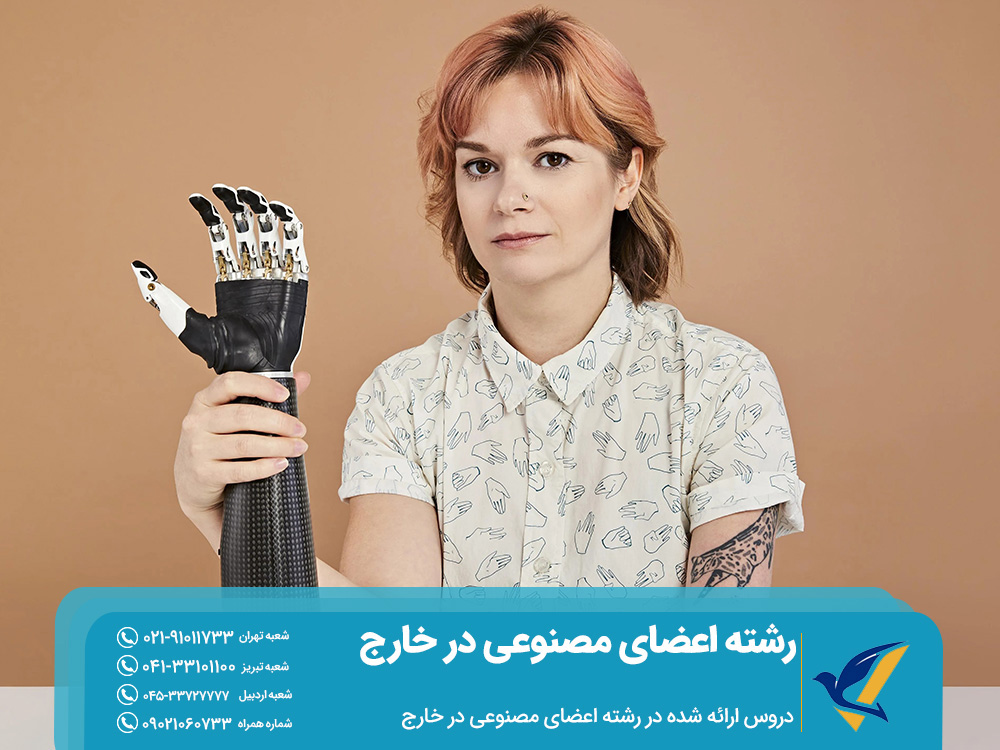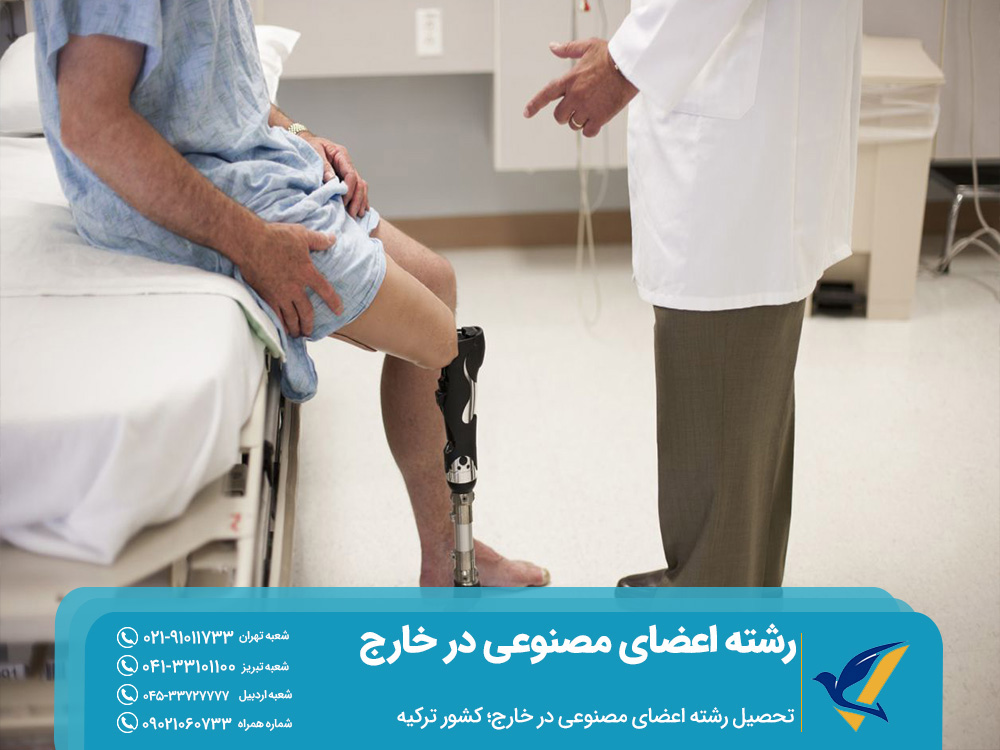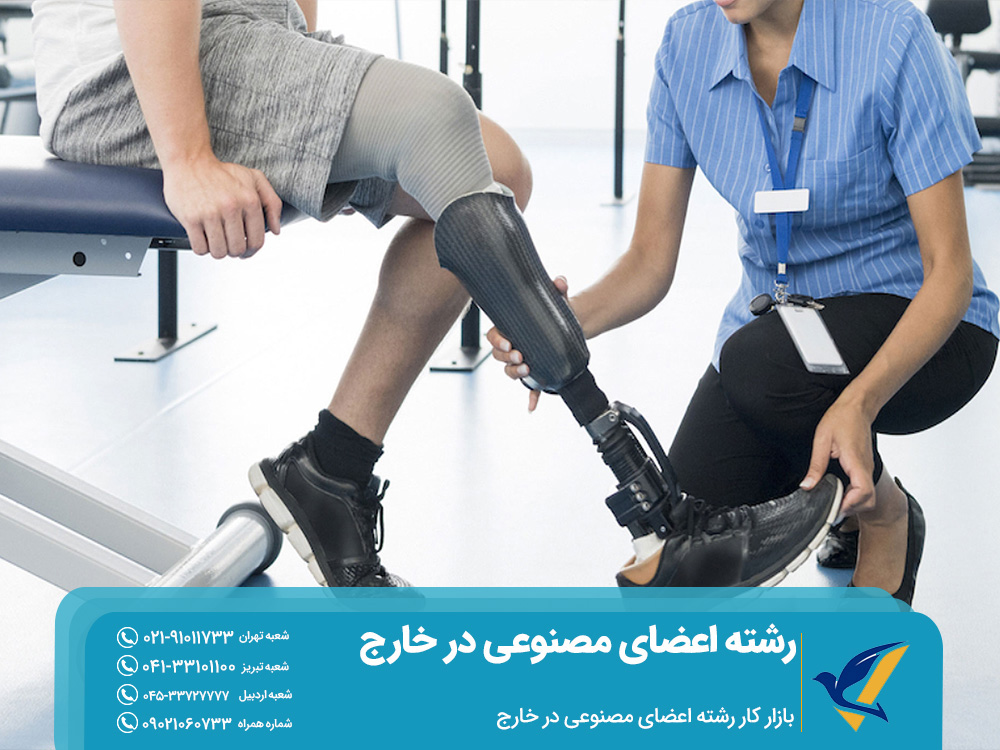The field of artificial limbs, also known as prosthetics, is an emerging discipline gaining increasing attention in universities worldwide. This program focuses on the design and creation of artificial limbs and assistive devices based on engineering principles and human anatomy. Students in this field learn how to design and create prosthetics and support devices, combining medical knowledge and engineering expertise.
For those interested in studying prosthetics abroad, it is important to understand the curriculum, which integrates medical sciences with engineering. Professionals in this field work in areas such as supporting weakened or disabled body parts, correcting deformities, and creating artificial limbs for those who have lost them.
One key distinction between prosthetics and biomedical engineering is that biomedical engineering involves areas like biomechanics and electronics, such as designing radiology and physiotherapy equipment. In contrast, prosthetics focuses more on the creation of assistive devices and external prosthetics like artificial arms, legs, eyes, and noses.
Graduates of prosthetics programs typically focus on simpler devices that can be crafted with basic tools, like standard prosthetic bases or various types of braces, whereas biomedical engineers may design more complex devices, such as cybernetic limbs or artificial organs like heart implants.

In general, the duration for studying prosthetics abroad at the undergraduate level is about 4 years, which typically equals two semesters. The duration may vary depending on the regulations of the respective country and university. Students can continue their studies as long as they fulfill all required courses under the rules. Here are some common courses in prosthetics programs from leading universities worldwide:
Basic Medical Courses:
- Orthopedics
- Neurology
- Anatomy of Upper and Lower Limbs
- Psychology of Disabilities
- Rehabilitation Principles
- Spinal Anatomy
Basic Engineering Courses:
- Statics
- Part-making Techniques
- Technical Drawing, Statistics, and Research Methods
Specialized Courses:
- Physiology and Biomechanics 1, 2, 3
- Professional Ethics
- Upper Limb Orthosis Design
- Lower Limb Prosthesis Design
- Spinal Orthosis Design and Construction 1, 2
- Aesthetic Prostheses
- Examination and Evaluation
- Management of Orthopedic Technical Centers
- Orthopedic Techniques
Studying Prosthetics Abroad in 2025:
As stated above, prosthetics is a key field within rehabilitation sciences, focusing on the design and creation of prosthetics and orthoses to enhance the quality of life. For students wishing to study prosthetics at top universities globally, some may prefer pursuing educational migration or job migration abroad instead of studying in Iran. This emphasizes the importance of understanding admission conditions, university rankings, and job prospects in this field.
Factors influencing your decision may include tuition fees, living costs, the university’s credibility, future employment opportunities, and the recognition of Iranian degrees abroad.

Top Universities for Prosthetics Worldwide:
Several factors contribute to determining the best universities for prosthetics, including university rankings, academic reputation, and the resources they provide for students. Some of the top universities for prosthetics and related fields are:
- Northwestern University – Evanston
- Georgia Institute of Technology-Main Campus
- University of Washington – Seattle Campus
- St. Petersburg State University-Main Campus
- Massachusetts Institute of Technology (MIT)
- Carnegie Mellon University
- Stanford University
- University of California
- University of Oxford
- National University of Singapore
- University of Cambridge
- Harvard University
Best Countries for Studying Prosthetics Abroad:
While it’s difficult to definitively say which country is the best for studying prosthetics, several factors must be considered when choosing a destination. These factors include tuition fees, living costs, the reputation and ranking of universities, job prospects, and the official language of the country. Here are some of the best countries for prosthetics education:
- Germany: Known for its excellent education system and industry demand for prosthetics professionals.
- United Kingdom: Offers numerous top-ranked universities with cutting-edge programs.
- Russia: Provides specialized programs with lower tuition fees compared to other countries.
- Australia: Has renowned institutions and a growing healthcare sector.
- Sweden: Known for innovation in healthcare and rehabilitation technology.
- Austria: Part of the European Union, offering opportunities for easy movement across the continent.
- China: Offers growing research in prosthetics with affordable education.
- Turkey: A developing hub for prosthetics, with increasing international recognition.
In choosing the best destination for studying prosthetics, language proficiency plays a crucial role. For example, proficiency in German opens opportunities in Germany, Austria, and Switzerland, while English speakers might prefer the UK, USA, Canada, Australia, or New Zealand. Additionally, Europe’s Bologna Process facilitates the recognition of degrees across member countries, making it easier for graduates to work internationally without the need for credential validation.

1. Studying Prosthetics in Turkey:
Turkey is considered one of the best destinations for healthcare professionals seeking career opportunities, especially in fields like nursing, medicine, dentistry, and pharmaceuticals. The country has a well-established education system with high standards. For those interested in studying prosthetics in Turkey, universities offer strong academic programs. Students are required to submit their academic credentials and work experience to undergo evaluation in Turkey’s healthcare system. One significant advantage of studying prosthetics in Turkey is the promising career prospects. Graduates in this field often enjoy competitive salaries, which tend to increase annually.
2. Studying Prosthetics in China:
China has become an increasingly popular choice for international students. It offers affordable tuition fees, and in some cases, universities provide free education in the field of prosthetics. This makes China a highly attractive option for students with financial limitations. As a rapidly developing country in terms of both technology and healthcare, China presents unique opportunities for research and professional growth in prosthetics. Additionally, China’s growing healthcare sector requires skilled professionals, making it a promising option for long-term career development.
3. Studying Prosthetics in Russia:
Russia is another appealing destination for students from Iran and other countries wishing to study prosthetics. One of the key advantages of studying in Russia is the easy process of obtaining student visas. The tuition fees for prosthetics programs in Russia are also considered affordable, particularly for programs taught in Russian. English-language programs may come at a higher cost, but the presence of top-ranked universities offering prosthetics education makes Russia a solid option. Students can submit their documents to leading Russian universities for consideration and benefit from affordable living and education costs.

Job Market for Prosthetics Graduates Abroad
For students pursuing prosthetics and rehabilitation-related fields, understanding the job market is crucial for making informed decisions. Graduates in prosthetics can find employment opportunities in both the private and public sectors.
Public Sector:
- Government Organizations: Graduates can work in institutions like the Welfare Organization, Foundation of Martyrs and Veterans Affairs, Red Crescent, and hospitals with orthopedic centers.
- Healthcare Facilities: Government-run hospitals or public rehabilitation centers often hire prosthetists for their specialized departments.
Private Sector:
- Private Clinics and Rehabilitation Centers: The private sector offers the most opportunities for prosthetics graduates. After gaining sufficient experience, many professionals open their private centers to provide prosthetic services.
- Specialized Services: These services include working with individuals who are paralyzed, have orthopedic conditions, or require custom solutions for foot deformities or amputations. Providing prosthetic limbs, orthopedic shoes, or aesthetic prosthetics such as artificial ears, eyes, and noses are part of this sector.
Innovative Opportunities:
Students from top prosthetics universities who are inclined toward research can contribute significantly to innovations, particularly in aesthetic prosthetics (e.g., artificial eyes, ears, or noses). As demand in this field is rising globally, specialists with expertise in these areas are in short supply, making it a promising area for career growth.
Overall, with the right qualifications and experience, graduates from reputable prosthetics programs have a wide range of career opportunities in both public and private sectors, and can even pursue entrepreneurial ventures. The need for prosthetics specialists is increasing, particularly in niche areas like cosmetic prosthetics and custom solutions for individuals with specific disabilities.

Income in the Prosthetics Field Abroad
The income of prosthetics professionals abroad greatly depends on their workplace. Here’s how it varies:
Public Sector:
In the public sector, such as government hospitals or rehabilitation centers, salaries are typically predefined by the government or relevant organizations. These positions tend to have a stable but generally lower pay scale compared to the private sector.
Private Sector:
In the private sector, salaries can vary significantly, especially for those starting their careers. However, experienced professionals with specialized skills or those who open their rehabilitation centers often earn much higher incomes. For example:
- Newcomers may earn modest salaries.
- Experienced prosthetists can command higher salaries, often based on their expertise and the services they provide.
Entrepreneurship:
Starting a private rehabilitation center is another way to increase income. These centers can bring in substantial revenue, especially when catering to individuals requiring custom prosthetics or specialized care.
Income Estimates in the U.S. (by state):
- California: $88,460
- Texas: $82,730
- Massachusetts: $99,880
- Illinois: $81,090
- New Hampshire: $81,460
- New York: $112,260
Conclusion:
The prosthetics field offers promising career opportunities with strong income potential. Graduates from top universities in this field can look forward to a guaranteed future in various countries. The key factors for success include gaining experience, continuously improving skills, and considering entrepreneurial paths, such as opening private rehabilitation centers.
For those interested in studying prosthetics abroad, institutions like Elm Vira can provide guidance on how to pursue education in countries known for this field, ensuring a strong foundation for a successful career.
میانگین امتیازات 5 از 5
Vote count: 1 Vote